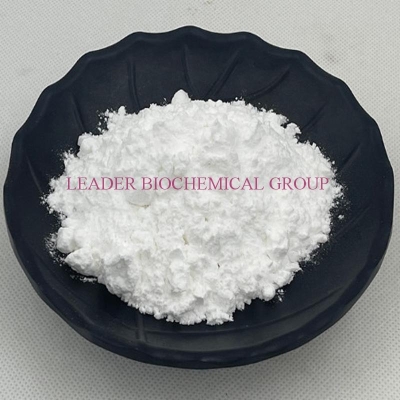-
Categories
-
Pharmaceutical Intermediates
-
Active Pharmaceutical Ingredients
-
Food Additives
- Industrial Coatings
- Agrochemicals
- Dyes and Pigments
- Surfactant
- Flavors and Fragrances
- Chemical Reagents
- Catalyst and Auxiliary
- Natural Products
- Inorganic Chemistry
-
Organic Chemistry
-
Biochemical Engineering
- Analytical Chemistry
-
Cosmetic Ingredient
- Water Treatment Chemical
-
Pharmaceutical Intermediates
Promotion
ECHEMI Mall
Wholesale
Weekly Price
Exhibition
News
-
Trade Service
Glycine, also known as aminoacetic acid, is a non-essential amino acid that is widely used in the chemical industry.
It is a colorless, sweet-tasting crystalline powder that is soluble in water and has a unique odor.
Glycine is used in a variety of applications, including the production of pharmaceuticals, nutritional supplements, and cosmetics.
One of the most common forms of glycine is glycinamide hydrochloride, which is a salt-like form of the amino acid.
Glycinamide hydrochloride is used in a variety of applications in the chemical industry.
One of the most common uses is as a starting material for the production of plastics and synthetic fibers.
Glycinamide hydrochloride is used in the production of polyester fibers, which are widely used in clothing and other textiles.
It is also used in the production of polyurethanes, which are used in a variety of applications, including insulation, adhesives, and coatings.
Another common use of glycinamide hydrochloride is in the production of detergents and cleaning products.
The amino acid is used as a builder in detergents, which helps to soften water and improve the cleaning power of the product.
Glycinamide hydrochloride is also used in the production of cosmetics and personal care products, such as shampoos, soaps, and lotions.
Glycinamide hydrochloride is also used in the production of pharmaceuticals and nutritional supplements.
The amino acid is used as a starting material for the production of a variety of drugs, including antibiotics, anticonvulsants, and anti-inflammatory drugs.
It is also used in the production of nutritional supplements, such as energy drinks and protein powders.
The production of glycinamide hydrochloride involves several steps, including the manufacture of glycine and the conversion of glycine to glycinamide hydrochloride.
Glycine is typically produced through a fermentation process using bacteria, such as E.
coli, which are able to synthesize the amino acid from glucose.
The glycine is then purified and converted to glycinamide hydrochloride through a series of chemical reactions.
The first step in the production of glycinamide hydrochloride is the conversion of glycine to an intermediate compound called cyanamide.
This reaction is carried out in the presence of a strong acid catalyst, such as sulfuric acid, and results in the formation of cyanamide and hydrogen chloride gas.
The cyanamide is then hydrolyzed to form glycinamide using a strong base, such as sodium hydroxide.
The glycinamide is then converted to glycinamide hydrochloride through a reaction with hydrochloric acid.
This reaction results in the formation of glycinamide hydrochloride, which is a salt-like form of glycine.
The resulting product is a colorless, crystalline powder that is soluble in water and has a unique odor.
The production of glycinamide hydrochloride is a complex process that requires a number of specialized equipment and chemicals.
The production process also requires strict quality control measures to ensure the purity and safety of the final product.
The production of glycinamide hydrochloride is an important part of the chemical industry and is used in a variety of applications, including the production of plastics, synthetic fibers, detergents, and pharmaceuticals.







